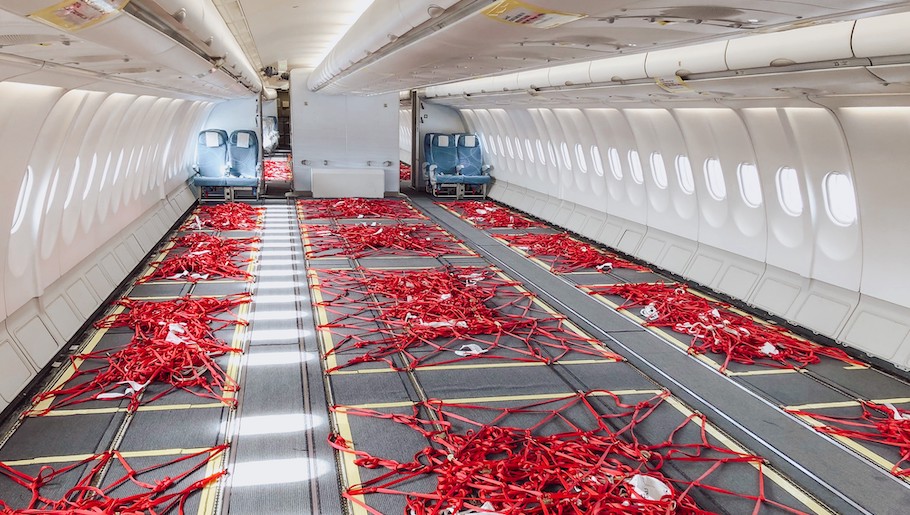
Faced with border closures and a staggering drop in passenger numbers due to the ongoing coronavirus crisis, many carriers have cancelled the majority of their routes and cut flights. With almost no demand for air travel, a number of passenger planes have been been left grounded at airports around the world.
The pandemic has now pushed some airlines to modify their passenger jets to make room for cargo in their cabins (instead of just their cargo holds) in an effort to make up for the revenue void left by the decline in passengers, as well as deliver critical medical supplies around the globe.
Here’s a look at how some airlines are reconfiguring or retrofitting passenger planes for cargo:
Air Canada
Air Canada started reconfiguring the cabins of three of its Boeing 777-300ER aircraft in April to make room for cargo. The carrier said it is transporting medical supplies from Asia and Europe to Canada on these modified jets.

The three Boeing 777-300ER aircraft were converted by Avianor, an aircraft maintenance and cabin integration specialist, at its Montreal–Mirabel facility. The carrier said 422 passenger seats were removed and cargo loading zones were designated for light weight boxes containing medical equipment and restrained with cargo nets were developed. These changes happened within six days, Air Canada said.
Canada’s national airline said last month it has operated 40 all-cargo flights since March 22 and plans to operate up to 20 all-cargo flights per week using a combination of the three newly converted Boeing 777s, Boeing 787s and Boeing 777s.
The carrier posted a photo on its website showing a completely seatless Boeing 777-300ER cabin.

Finnair
Finnair has modified two Airbus A330 aircraft for cargo use by removing economy seats and entertainment system power cords from the cabins. They were replaced with nets for safely attaching the cargo.
The carrier said the changes will allow freight to be carried in the cabin, in addition to the cargo hold. About half of the existing capacity of the wide-body aircraft is already reserved for cargo below the cabin, the carrier added.

The airline says with these changes, the cargo capacity of the aircraft doubles. The free cabin space will be used mainly for shipping supplies needed in the coronavirus pandemic.
Finnair engineer Nea Maeda, who specialises in aircraft weight and balance, led the modification project.
“Passenger and cargo aircraft have different requirements. Passenger planes are built to fly people and cargo planes are made to carry freight. The weight of people and cargo is distributed in a different way inside the aircraft,” Maeda explains.

Finnair said it is currently operating more than 50 one way cargo flights a week. In April and May, Finnair flew cargo to cities in China, Japan and Korea, as well as Tallinn and Brussels in Europe. The carrier said it has also started cargo flights to New York and Bangkok.

Lufthansa
Germany’s Lufthansa, which also operates a separate cargo-only business, said in April that it removed seats from four of its A330s for cargo space to transport goods.

The carrier also said up to five flights with passenger aircraft per day, from Frankfurt and Munich, will be supporting its cargo-operations.













